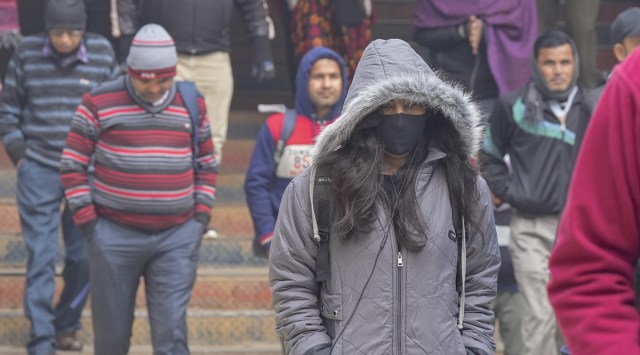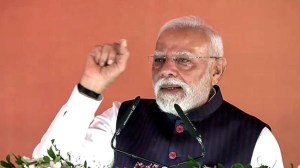Stay updated with the latest - Click here to follow us on Instagram
Delhi shivers at 3°C, coldest yet this winter
Cold wave conditions are set to persist on Friday with the maximum temperature likely to settle at around 17 degrees Celsius and the minimum temperature being around four degrees.
 Commuters come out of the Shivaji Bridge station during a cold and foggy winter morning, in New Delhi, Thursday, Jan. 5, 2023. (PTI)
Commuters come out of the Shivaji Bridge station during a cold and foggy winter morning, in New Delhi, Thursday, Jan. 5, 2023. (PTI) Delhi-NCR has been shivering under cold wave conditions with chilly winds, from the northwest, impacting the region.
Cold wave conditions are recorded by the India Meteorological Department (IMD) when the minimum temperature is four degrees Celsius or lower. On Thursday, the Safdarjung weather station, which provides a marker for the city, recorded a minimum temperature of three degrees Celsius, which is four degrees below the normal and the lowest for the winter so far. The weather stations at Aya Nagar and Ridge recorded an even lower minimum temperature of 2.2 degrees Celsius, while Lodhi Road recorded 2.8 degrees.
There wasn’t much respite during the day with the maximum temperature also settling at a below-normal figure of 16.5 degrees Celsius at Safdarjung. The city was enveloped in dense fog in the early hours with visibility remaining low, at around 50 m even at 8.30 am at Palam and Safdarjung.
IMD scientist R K Jenamani said, “Fog and the absence of direct sunlight have been keeping the daytime temperature much below normal. At the same time, there are westerly and northwesterly winds of around 5 to 10 kmph speed playing a role during the day. In parts of north Rajasthan and Haryana, the temperature was very low, and the winds were coming from these areas where the temperature was sub-zero to two degrees, affecting Delhi and NCR.”
Cold wave conditions are set to persist on Friday with the maximum temperature likely to settle at around 17 degrees Celsius and the minimum temperature being around four degrees. Moderate to dense fog remains on the forecast for Delhi on Friday, Saturday and Sunday.
A western disturbance is likely to affect northwest India from January 7, and temperature is likely to begin rising from the night of January 6, Jenamani added.
The minimum temperature is likely to rise to around 6 degrees Celsius by January 8, while the maximum temperature could return to around 20 degrees by January 9.
The movement of cold air masses “in response to steering by upper-level winds” is one of the factors that the IMD lists to explain the occurrence of cold waves. The IMD recommends avoiding prolonged exposure to cold and covering the head, neck, hands and toes adequately since much of the heat loss occurs through these parts.
Cold wave conditions were also recorded in parts of Haryana, Punjab and Himachal Pradesh on Thursday.







